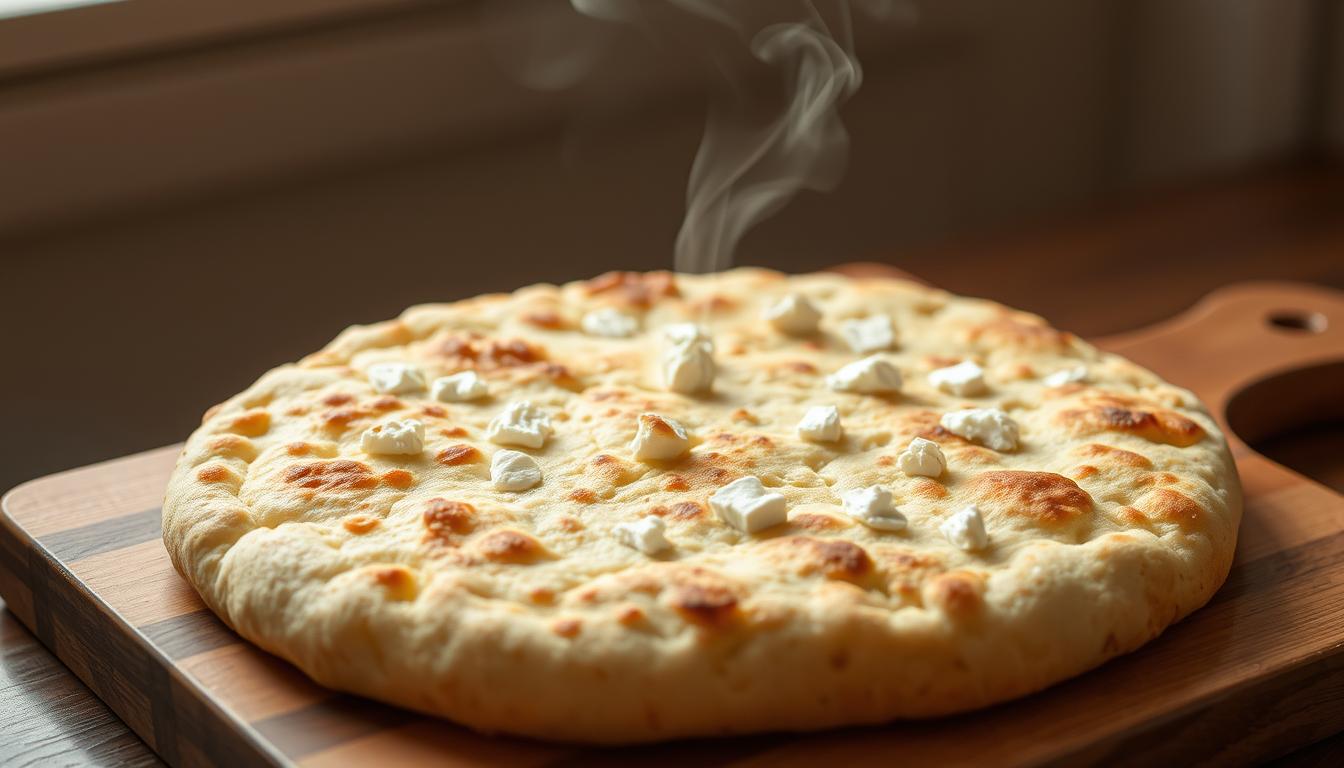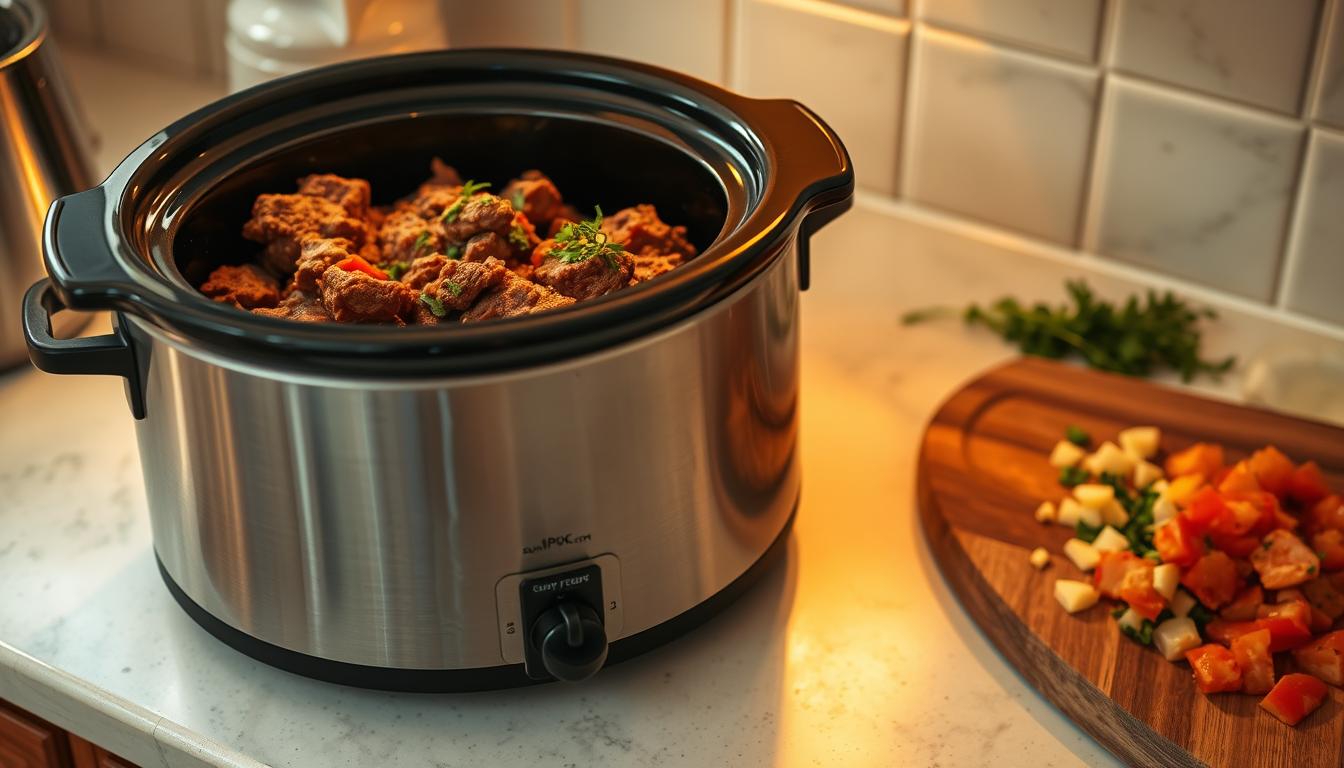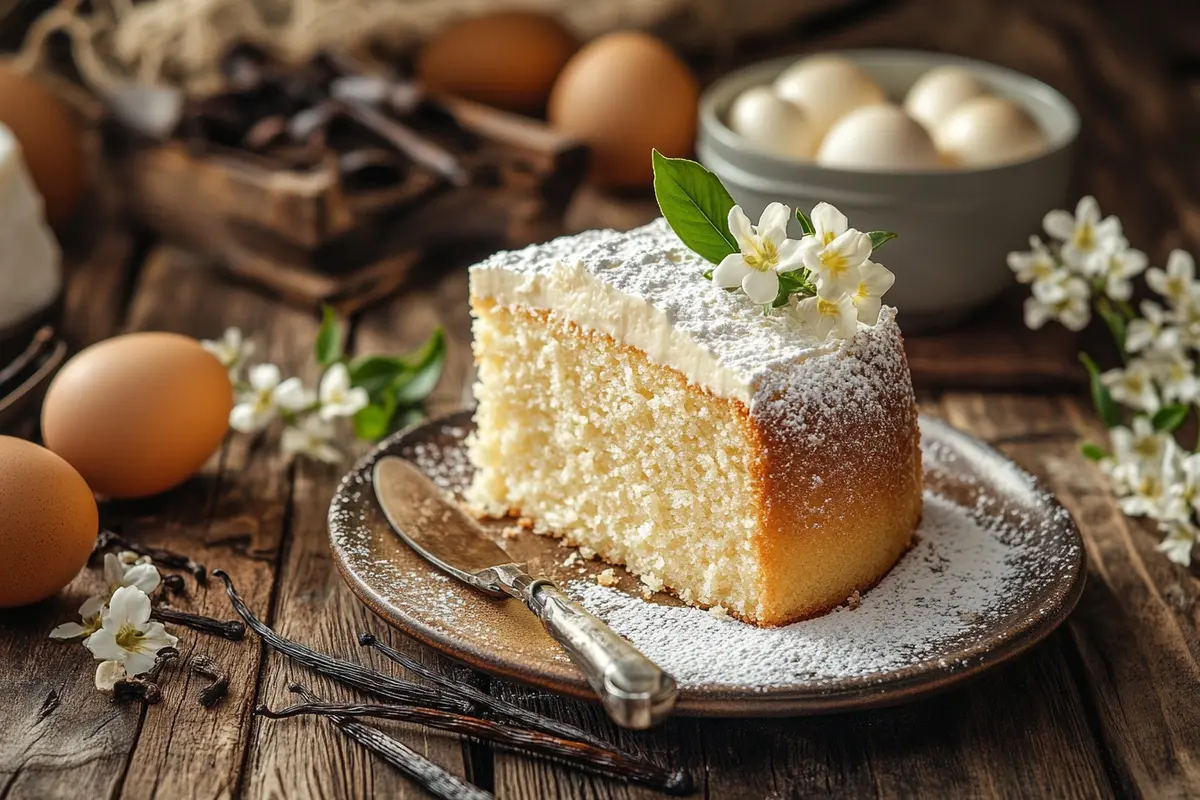Looking for a simple and nutritious meal addition? You’re in luck! Making delicious cottage cheese flatbread at home is easy. This high-protein treat is versatile and simple to make.
You can enjoy it as a snack, use it as a base for your favorite toppings, or serve it alongside your meals. The best part? It’s ready in just a few steps. With a simple recipe and minimal ingredients, you can create a healthy and tasty flatbread that suits your dietary needs.
Key Takeaways
- Easy to make with minimal ingredients
- High in protein, suitable for various diets
- Versatile for different meals and snacks
- Ready in just a few simple steps
- A healthy alternative to traditional flatbreads
Introduction to Cottage Cheese Flatbread
Cottage cheese flatbread is a healthy, high-protein option instead of regular bread. It’s made with cottage cheese and simple ingredients. This flatbread is tasty and full of nutrients.
What is Cottage Cheese Flatbread?
Cottage cheese flatbread is a special flatbread made with cottage cheese. It’s mixed with flour and eggs to make a dough. This mix creates a high-protein, low-carb bread alternative. It’s great for those watching carbs or wanting more protein.
Benefits of Using Cottage Cheese
Using cottage cheese in flatbread has many health benefits. It’s a great source of protein for muscle repair and growth. It also has lots of calcium, which is good for bones. Adding cottage cheese to your flatbread makes it moist and more enjoyable to eat.
Ideal Pairings for Flatbread
Cottage cheese flatbread is very versatile. You can top it with avocado, tomatoes, and feta cheese for a snack. It’s also perfect for mini pizzas or as a side with dips and spreads. Its mild taste lets it pair well with many flavors, making it a great meal addition.
Ingredients You Will Need
To make cottage cheese flatbread at home, you need some basic ingredients. You’ll gather a few key items for your homemade flatbread with cottage cheese. Having the right ingredients makes the process easier and the result tastier.
Essential Ingredients
The heart of your low carb cottage cheese flatbread is its simple ingredients. You’ll need:
- Cottage cheese
- Eggs
- Self-rising flour (or all-purpose flour with baking powder)
These ingredients help create a dough that’s easy to work with and full of flavor.
Optional Add-Ins for Flavor
For an extra flavor kick, add:
- Herbs like rosemary or thyme
- Spices such as garlic powder or paprika
- Other flavorings like dried or fresh basil
These extras can make your flatbread even better, perfect for different toppings or dips.
Equipment and Tools Required
Having the right tools is as crucial as having the right ingredients. You’ll need:
- A mixing bowl
- A measuring cup and spoons
- A kneading surface or a stand mixer with a dough hook attachment
- A rolling pin
- A skillet or baking sheet
These tools will help you make and cook your homemade flatbread with cottage cheese smoothly.
Preparing the Dough
Making the dough is easy. You mix, knead, and rest the ingredients to get the right feel. To create a simple cottage cheese flatbread, blend the ingredients well and handle the dough carefully.
Mixing Ingredients
Start by mixing cottage cheese with eggs until it’s smooth. This mix is the dough’s base, adding moisture and protein. Then, add flour to make the dough. Use gluten-free flour for a gluten-free cottage cheese flatbread recipe.
Kneading Techniques
Kneading is key for the dough’s texture. You need to knead until it’s smooth and easy to work with. You can do this by hand or with a stand mixer and dough hook. Good kneading makes the flatbread tender and even.
Resting the Dough
After kneading, let the dough rest. This step lets the flour soak up moisture and the gluten relax. For a simple cottage cheese flatbread, rest the dough for at least 30 minutes.
Rolling Out the Flatbread
The art of rolling out your cottage cheese flatbread dough is key. Getting the right thickness and shape is important. It makes your flatbread both delicious and good-looking.
Best Practices for Rolling
To roll out your quick cottage cheese flatbread dough well, start by dusting your surface with flour. This prevents the dough from sticking. Use a rolling pin to roll it out evenly, keeping the pressure consistent.
While rolling, turn the dough often to keep its shape. This prevents it from becoming too long or uneven. If it starts sticking, add a bit more flour.
Ensuring Even Thickness
Even thickness is crucial for a great cottage cheese flatbread recipe. Aim for about 1/4 inch thick. This gives you the perfect crunch and softness.
To check if it’s even, use a ruler or just look at it. If some parts are thicker, roll them out more or stretch the dough a bit.
Techniques for Shaping
After rolling, you can shape your dough in many ways. For a classic look, make it into rounds or rectangles.
To make rounds, shape the dough with your hands in a circular motion. For rectangles, trim the edges for a clean shape. You can also try different shapes for fun.
Cooking Methods: Stovetop vs. Oven
When cooking your cottage cheese flatbread, you can choose between stovetop or oven. Each method has its own benefits. The choice depends on what you like and the texture you want in your homemade flatbread with cottage cheese.
Advantages of Stovetop Cooking
Cooking on the stovetop is quick and can make the crust crispy. It’s great for a traditional flatbread feel. Use a non-stick skillet or griddle over medium-high heat for the best results.
Stovetop cooking lets you see how it’s doing right away. This is helpful if you’re new to making flatbreads.
Benefits of Baking in the Oven
Baking in the oven makes the flatbread cook evenly. The oven’s dry heat prevents burnt spots. This is good if you’re making several flatbreads at once.
| Cooking Method | Cooking Time | Texture | Evenness of Cooking |
|---|---|---|---|
| Stovetop | 2-3 minutes per side | Crispy crust, soft interior | Can be uneven if not monitored |
| Oven | 10-12 minutes | Soft throughout, slightly crispy edges | More even cooking |
Choosing between stovetop and oven for your easy cottage cheese flatbread depends on your taste and recipe.
Flavoring Your Flatbread
Learn how to flavor your cottage cheese flatbread for a great meal side. You can add flavor before or after cooking. This lets you try many different tastes.
Herb and Spice Suggestions
Herbs and spices can make your healthy cottage cheese flatbread taste better. Try garlic powder, Italian seasoning, or dried herbs like oregano and thyme. Mix them into the dough for a balanced flavor.
For a stronger taste, sprinkle herbs on top before cooking. Fresh herbs like rosemary or parsley add a nice aroma and flavor to your flatbread.
Toppings You Can Use
Toppings let you customize your low carb cottage cheese flatbread. Start with olive oil and salt for a classic taste. For more flavor, add avocado, hummus, or tapenade.
For a heartier topping, try cheese, vegetables, and meats. Mozzarella with tomatoes and basil or grilled chicken with pesto are great choices.
Cheese and Vegetable Combinations
Combining cheese and vegetables makes for a tasty snack. Feta cheese with roasted bell peppers or zucchini is a healthy and delicious option.
Use your cottage cheese flatbread as a veggie pizza base. Add tomato sauce, mozzarella and parmesan cheese, and your favorite veggies. Bake until the cheese is melted and bubbly.
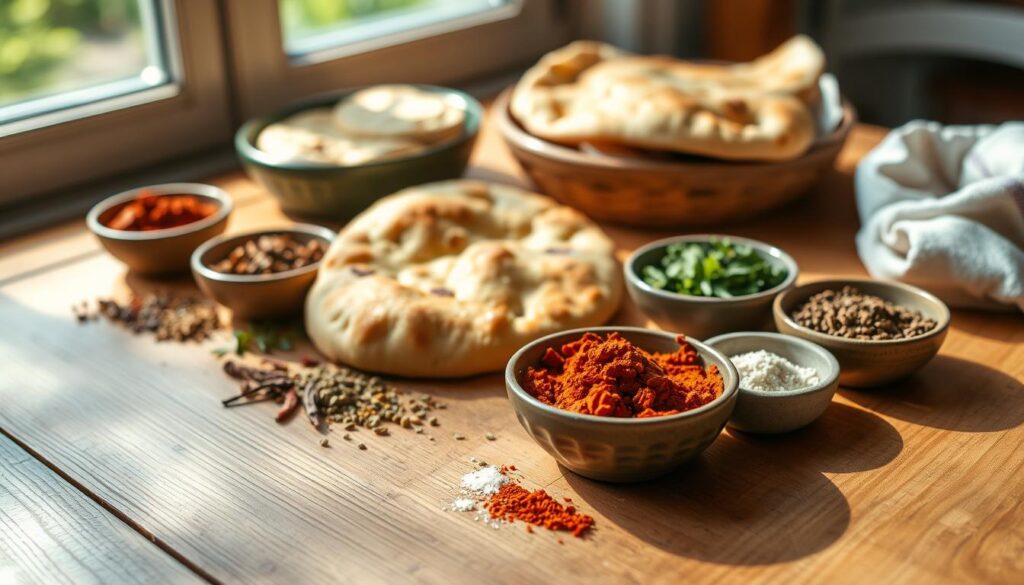
Serving Suggestions
Now that you’ve made your delicious cottage cheese flatbread, it’s time to explore serving options. This versatile flatbread can be a great addition to many meals. It’s perfect as a base for pizzas and sandwiches or as a side to your favorite dips and spreads.
Creative Serving Ideas
Cottage cheese flatbread is incredibly versatile. You can top it with a variety of ingredients for a quick snack or light meal. Try using it as a base for mini pizzas with tomato sauce, mozzarella cheese, and your favorite toppings.
Or, use it to make sandwiches. Add your favorite fillings, like roasted vegetables, grilled chicken, or hummus, for a satisfying meal.
Pairing Suggestions for Dips
Simple cottage cheese flatbread pairs well with many dips and spreads. Try it with classic hummus, flavorful baba ganoush, or refreshing tzatziki sauce. The flatbread’s mild flavor complements the dips without overpowering them.
Feel free to experiment with different flavor combinations. For example, a spinach and artichoke dip can add a rich and creamy element to your snack or meal.
Incorporating Flatbread into Meals
It’s easy to incorporate your delicious cottage cheese flatbread into meals. Serve it alongside soups or salads for a filling lunch. It’s also great with grilled meats or vegetables, adding a satisfying crunch to your meal.
For a more substantial meal, consider using the flatbread as a crust for paninis or as a base for open-faced sandwiches. The possibilities are endless, and it’s a great way to get creative with your cooking.
Storing and Reheating Flatbread
Wondering how to store and reheat your gluten-free cottage cheese flatbread? It’s important to keep it fresh. The right storage and reheating methods will help.
Proper Storage Techniques
Store your flatbread in an airtight container to keep it fresh. This stops moisture from making it soggy. You can store it in the fridge for up to 3 days.
Storage Tips:
- Cool the flatbread completely before storing to prevent condensation.
- Use a paper towel to separate the flatbreads and absorb any excess moisture.
- Keep the container away from direct sunlight and heat sources.
How to Reheat Flatbread
Reheating your gluten-free cottage cheese flatbread is easy. You can use a pan or the microwave.
| Reheating Method | Instructions | Result |
|---|---|---|
| Pan Reheating | Heat a non-stick pan over medium heat. Place the flatbread in the pan and cook for 1-2 minutes on each side. | Crisp exterior, soft interior |
| Microwave Reheating | Wrap the flatbread in a damp paper towel. Microwave on high for 20-30 seconds. | Soft and warm |
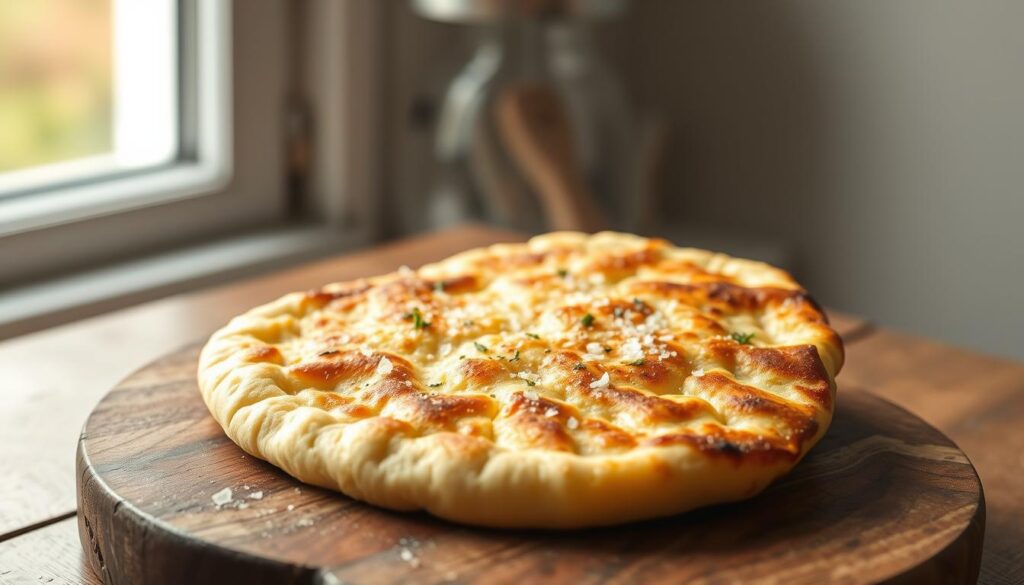
Follow these tips for storing and reheating. Your quick cottage cheese flatbread will stay tasty and fresh for days.
Troubleshooting Common Issues
Even with a simple recipe, problems like sticky dough or flatbread not rising can occur. Don’t worry, these issues are easy to resolve with a few simple adjustments.
Dough Too Sticky? Solutions
If your cottage cheese flatbread dough is too sticky, it might be due to the high moisture content in the cottage cheese. To fix this, you can try adding a bit more flour to balance out the moisture.
Tips to avoid sticky dough:
- Use a higher-protein flour to help with dough structure.
- Drain excess moisture from the cottage cheese before mixing.
- Knead the dough thoroughly to develop gluten.
Flatbread Not Rising? Tips
If your flatbread is not rising as expected, it could be due to overworking the dough or incorrect cooking temperature. Here are some tips to help your flatbread rise properly:
- Avoid overmixing the dough to prevent developing too much gluten.
- Ensure your cooking surface or oven is at the right temperature.
- Let the dough rest for the recommended time to allow it to rise.
Here’s a summary of common issues and their solutions in a tabular format:
| Issue | Solution |
|---|---|
| Sticky Dough | Add more flour, use higher-protein flour, drain excess moisture from cottage cheese |
| Flatbread Not Rising | Avoid overmixing, ensure correct cooking temperature, let dough rest |
Nutrition Information
Knowing the nutritional value of your homemade flatbread with cottage cheese is key for a balanced diet. This flatbread is not just tasty but also good for you. It’s packed with nutrients from its ingredients.
Caloric Breakdown
The calories in your simple cottage cheese flatbread depend on the ingredients. A 100g serving has about 150-200 calories. Most of these calories come from carbs in the flour and protein in the cottage cheese.
A typical breakdown might look like this:
- Carbohydrates: 25-30g
- Protein: 15-20g
- Fats: 2-3g
Health Benefits of Ingredients
The ingredients in your homemade flatbread with cottage cheese are good for you. Cottage cheese is full of protein, which helps muscles. It also has calcium, which is great for bones.
Nutrition experts say cottage cheese is very nutritious. It makes you feel full, which is good for weight management. Using healthy ingredients in your flatbread boosts its nutritional value.
“Incorporating protein-rich foods like cottage cheese into your diet can have numerous health benefits, from supporting muscle health to aiding in weight management.”
Choosing whole grain flour and adding herbs or veggies makes your flatbread even healthier. This makes simple cottage cheese flatbread a great choice for meals and snacks.
Conclusion and Final Thoughts
Now you know how to make delicious cottage cheese flatbread. This recipe is great for trying out different toppings and fillings. You can mix and match flavors and textures to your liking.
Key Steps Recap
To make this tasty flatbread, start by mixing and kneading the dough. Let it rest, then roll it out. Cook it on your stovetop or in the oven. Each step is important for the perfect flatbread.
Experiment with Flavors
Feel free to try new herbs and spices or toppings. This recipe lets you add your own twist. It’s a great way to explore different cuisines and flavors in your kitchen.
This simple recipe makes a healthy and tasty snack or meal. It’s full of protein and flavor. So, go ahead and bake your cottage cheese flatbread. Make it a regular part of your cooking routine.
FAQ
What is the best type of cottage cheese to use for making cottage cheese flatbread?
For cottage cheese flatbread, choose a high-protein, low-sodium cottage cheese. You can pick between small-curd or large-curd, based on what you like.
Can I make gluten-free cottage cheese flatbread?
Yes, you can make gluten-free cottage cheese flatbread. Use gluten-free flours like almond or coconut flour. Adjust the flour ratio as needed for your diet.
How do I prevent my cottage cheese flatbread from becoming too dense?
To avoid a dense flatbread, don’t overmix the dough. Use the right cottage cheese to flour ratio. Be gentle when kneading to keep the dough soft.
Can I make cottage cheese flatbread ahead of time?
Yes, you can make cottage cheese flatbread ahead of time. Prepare the dough and refrigerate it for up to a day or freeze it. Cooked flatbread can be stored in an airtight container for up to 3 days.
What are some healthy topping options for cottage cheese flatbread?
Healthy toppings include avocado, hummus, roasted veggies, lean meats, and fresh herbs. Try dips like tzatziki or guacamole for extra flavor.
How do I reheat leftover cottage cheese flatbread?
Reheat leftover flatbread by wrapping it in a damp paper towel and microwaving for 20-30 seconds. Or, reheat in a toaster oven or conventional oven at 350°F (175°C) for a few minutes.
Is cottage cheese flatbread suitable for a low-carb diet?
Cottage cheese flatbread can be low-carb if made with almond or coconut flour instead of traditional flour. This reduces carb content.
Can I freeze cooked cottage cheese flatbread?
Yes, you can freeze cooked cottage cheese flatbread. Wrap it tightly in plastic wrap or aluminum foil and store in a freezer-safe bag. Thaw at room temperature or reheat in the oven or microwave.

